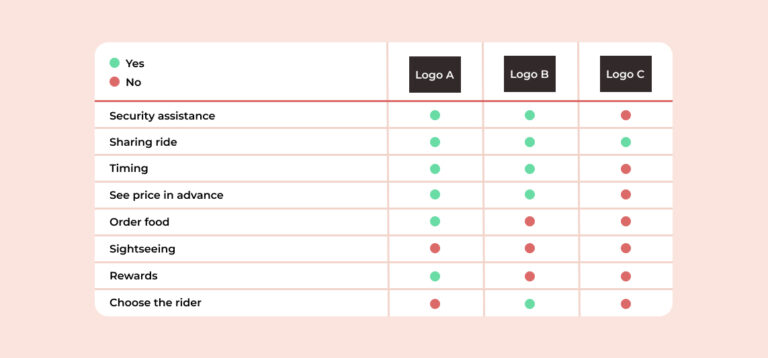
They may look similar, but these personas serve different purposes
There’s a moment on almost every cross-functional product team when the wires get crossed. Marketing has “SaaS Sarah” and “Decision-Maker Dave” mapped out in vivid detail, right down to their favorite podcast. Meanwhile, the product team is trying to design features for “Power User Priya” and “Frustrated First-Time Frank” and wondering why their research doesn’t seem to align.
This confusion usually stems from using one set of personas for two very different goals. And that’s the core of the problem: product management personas and marketing personas are not interchangeable.
Understanding the distinction isn’t just a matter of semantics. It’s a vital part of aligning teams, building the right product, and growing sustainably in the competitive world of B2B SaaS.
They may look similar, but these personas serve different purposes, and your SaaS success depends on knowing the difference.
Let’s get into it.
Why personas matter in B2B SaaS
Personas are a common UX tool. In fact, they are so common that they’ve become almost cliché. But when done right, they connect insight with action. They help teams understand real user needs, behaviors, and motivations.
Still, not all personas are created with the same purpose. Product management personas and marketing personas are built using different inputs, for different audiences, and to solve different business challenges.
In a typical SaaS company, both the product team and the marketing team use personas to inform their work. The catch? They’re solving for different outcomes.
Product management personas: Behavior over brand
A product management persona (sometimes called a user persona) is built on behavioral research. Think ethnographic interviews, usability testing, support ticket analysis, or even usage analytics.
These personas typically include:
- Contextual goals (e.g., “I need to generate a report quickly to share with my client.”)
- Pains and workarounds (e.g., “The current reporting tool takes too long and doesn’t export cleanly.”)
- Feature preferences
- Day-in-the-life workflows
They’re functional, grounded, and hyper-specific.
These personas help product managers prioritize features, shape roadmaps, and align UX decisions with real-world use. They’re about friction and flow — what keeps a user engaged, or what causes them to churn.
And while demographic info like job title and company size may be included, it’s the behavior that drives the persona’s utility.
Marketing personas: Segments, not systems
In contrast, marketing personas often start from segmentation data: roles, industries, company sizes, pain points. These are crafted to attract and convert, focusing on messaging that resonates with buying triggers.
A marketing persona might include:
- Demographics and firmographics (e.g., “VP of Sales at a mid-sized logistics company”)
- Buying motivation (e.g., “Wants to streamline their team’s onboarding process”)
- Preferred content types (e.g., “Reads LinkedIn thought leadership posts”)
- Objections and barriers to purchase
Marketing personas help teams shape email campaigns, write targeted content, and align ad messaging. They are particularly valuable at the top and middle of the funnel.
But here’s the key: marketing personas are typically built on what people say and signal, while product personas are built on what people do.
The risk of misalignment
Problems arise when companies conflate these two types of personas or try to create one “master persona” to serve both teams. Product management personas and marketing personas are not the same.
Let’s say marketing builds a persona for “Startup Steve,” a founder at a 10-person tech company who’s seeking scalability. He’s visionary, decisive, and loves innovation.
But when the product team interviews actual users, they realize Steve’s team isn’t using the product the way he envisioned. His customer success manager — “Hands-On Heather” — is the one logging in daily, managing users, and hitting snags.
If the product team designs only for Steve, they risk missing the real user’s needs. And if marketing writes content for Heather, they might miss the buyer altogether.
In other words: you can’t design a good product if you don’t know who’s using it, and you can’t sell one if you don’t know who’s buying it.
When personas collaborate: Real alignment
The most successful B2B SaaS companies treat personas as collaborative assets, not territorial artifacts.
When product management personas and marketing personas are intentionally developed in parallel — each grounded in appropriate data sources — they can inform every part of the customer experience, from first click to long-term adoption.
Here’s what that looks like in practice:
- Shared workshops where both product and marketing teams discuss research findings and co-create aligned personas.
- Dual-track persona models: One set for buyers, one for users, with clear delineation of purpose and data sources.
- Living documentation: Personas that evolve over time as both usage data and market positioning shift.
At Standard Beagle, we often recommend persona playbooks that clearly define which teams should use which personas and why. It keeps everyone focused on their lane but still rowing in the same direction.
Case study: Grounding personas in real behavior for a B2B learning platform
We worked with a B2B company focused on improving the training experience for construction teams through their digital learning platform. Our engagement centered on conducting user research and improving the overall UX of the platform to better meet the needs of the people using it on job sites.
Our team conducted interviews with platform users and stakeholders, focusing on uncovering pain points around accessing and completing training in real-world environments. These insights helped us build research-backed personas grounded in behavior, not assumptions.
While the marketing team was focused on decision-makers—the ones signing contracts—we developed a user-centric lens through detailed product personas. By clearly distinguishing between product management personas and marketing personas, the team could finally see where feature design and messaging had diverged.
The result was not only stronger alignment, but a better product experience overall.
Tips for building better personas in your SaaS org

Whether you’re rebuilding your personas or just refining them, here are a few practical pointers:
- Start with the question: Is this persona for conversion or for usability?
- Use real data: Combine qualitative and quantitative research wherever possible.
- Segment by behavior, not just demographics: Especially for product personas.
- Avoid persona bloat: Don’t create more personas than your team can meaningfully use.
- Review and update regularly: Personas should be treated like products—iterated over time.
Final thought
The differences between product management personas and marketing personas aren’t just technical—they’re philosophical. One is about building the right thing; the other is about getting the right people to care.
When you understand how they work — and how they work together — you can build smarter strategies, stronger alignment, and better products.
Because at the end of the day, both personas point to the same goal: solving real problems for real people.
Would you like help creating aligned personas for your product and marketing teams? Let’s talk about your SaaS strategy.











